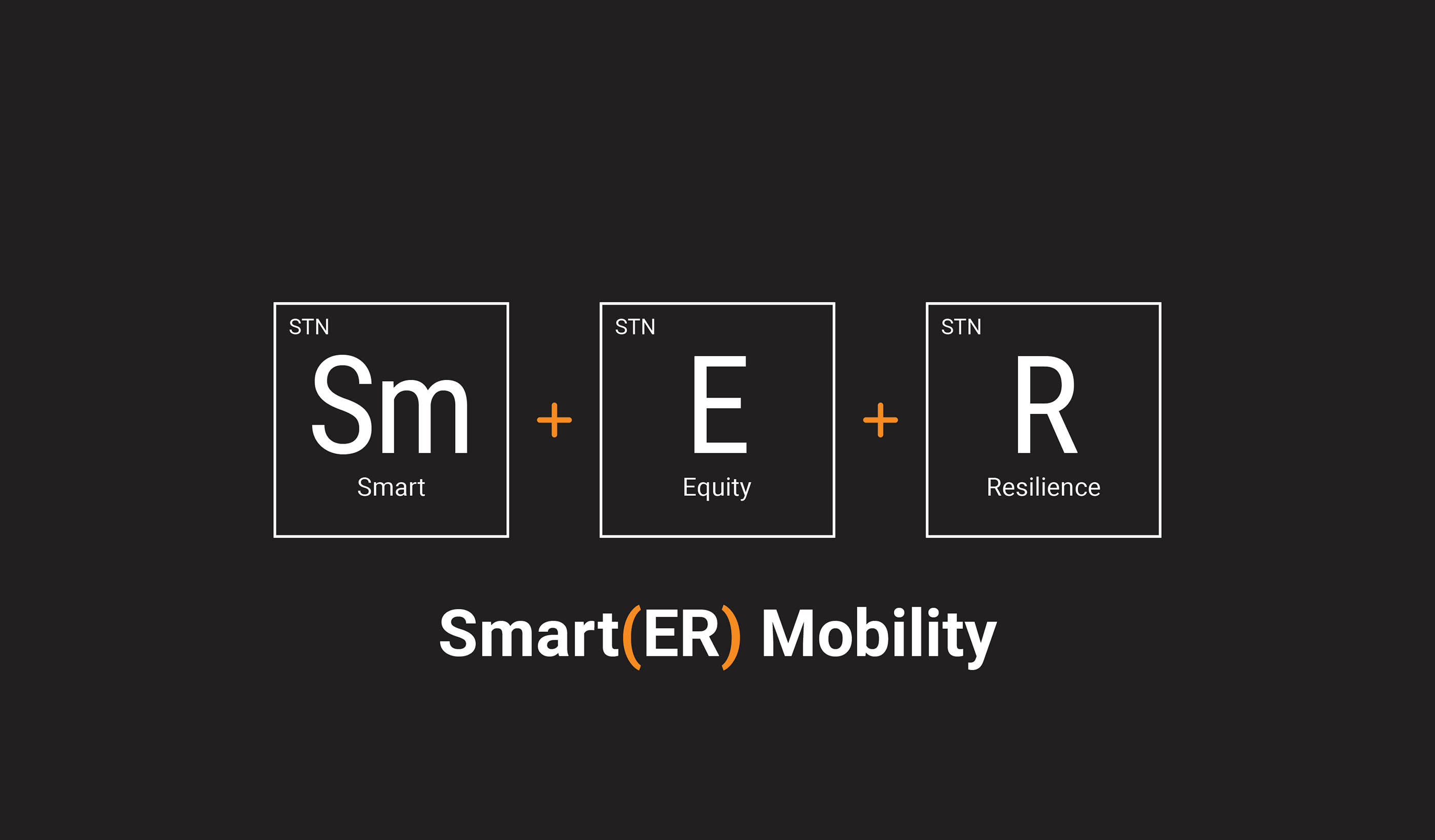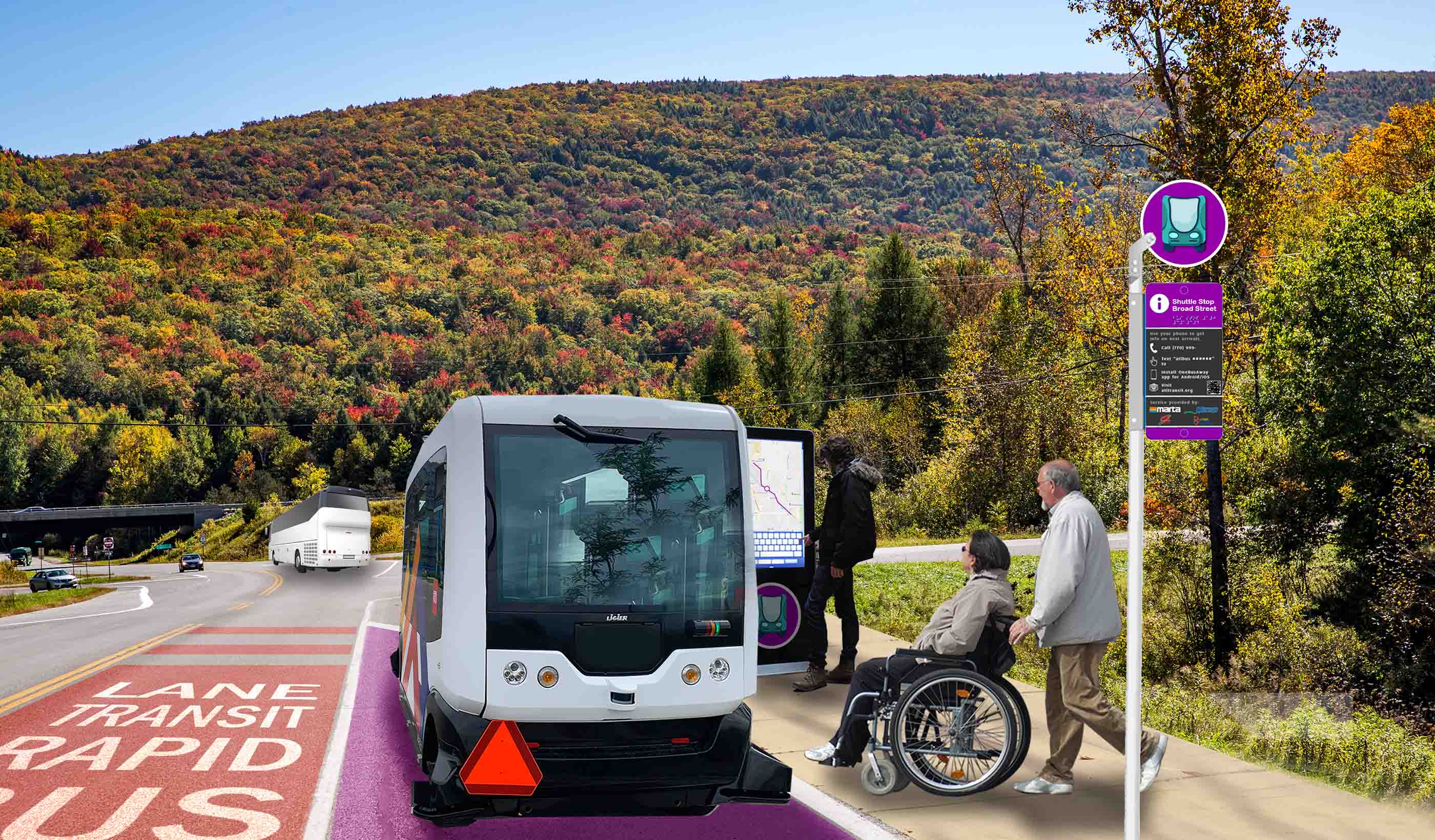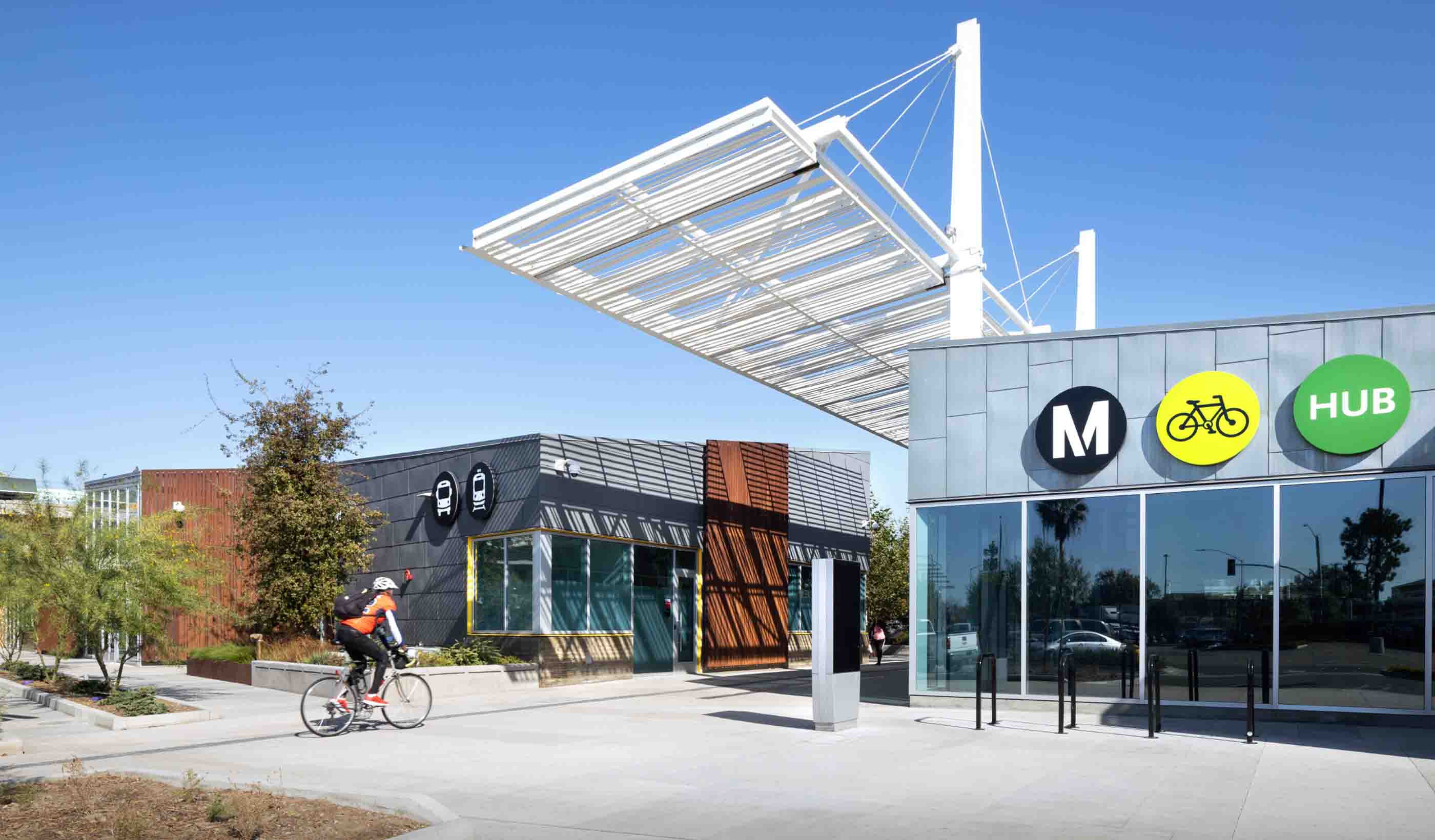A Smart(ER) approach to mobility: Prioritizing equity and resilience
November 05, 2021
November 05, 2021
We need to leave the status quo behind to turn mobility into a tool for positive social change
The focus on equity and resilience in our transportation system has never been more necessary.
Innovation is driving that evolution. We must seize the opportunity for a more integrated, equitable, resilient, safer, and more people-centric mobility network. We must rethink the way we approach transportation projects. That includes partnerships and approaches to governance, funding, and project execution.
We must turn innovation inward to reboot how we plan, design, and implement the next generation of mobility. And, perhaps most importantly, how we manage and use the public right-of-way. We need to put people first as opposed to the status quo of making vehicles our top priority.

A Smart(ER)™ Mobility approach is grounded in the reality that harnessing the power of disruption and realizing an equitable and resilient mobility ecosystem requires a long-term investment.
Smart mobility needs to focus on more than technology. It needs to be Smart(ER) to promote collaboration between the public and private sector. It needs to rethink processes designed for an auto-dominated system. Finally, it needs to support the transition to a mobility ecosystem that provides access to jobs, services, and education to build more equitable and resilient communities that leave no one in the rearview mirror.
A Smart(ER) approach starts with the true value of access to safe, affordable, reliable, and convenient mobility options.
For decades, the private sector has pushed for—and the public sector has been constrained by—programs and funding rules that encourage private vehicle ownership. But there is a growing realization that this model is unsustainable. Demand is increasing for a system that can keep pace with rising infrastructure maintenance costs. That system can also be future ready for automated and connected vehicles—that move people and goods.
Various transportation and planning organizations are changing their focus. They are prioritizing mobility options that are safe, affordable, reliable, and convenient. Breaking down silos and challenging the existing approach to how we prioritize, manage, and allow the use of the public right-of-way is critical to realizing a new and better mobility ecosystem. This will take rethinking the roles and responsibilities of the public and private sectors around the transportation system and its ongoing evolution. Equity and resilience must be the focus.
Smart mobility needs to focus on more than technology. It needs to be Smart(ER) to promote collaboration between the public and private sector.
New technology, coupled with increases in mobility-focused investment, have brought us to a “moonshot” moment. We can truly realize the power of mobility as an equalizer. A Smart(ER) mobility approach focuses on three things. First, a common mobility vision. Second, using multidiscipline thinking and breaking down jurisdictional borders. Third, inspired creativity to harness the power of innovation for positive change. Together, these will power equitable and resilient communities through shared options for all users.
Breaking down long-standing silos to integrate and prioritize equity and resilience requires moving beyond the status quo in how we:
Addressing these issues requires having the hard conversations that have been missing. This means everything from procurement to zoning. And curb management to right-of-way design. By addressing these issues, we can support the safe and effective use of the next generation of mobility options.
Access to safe, affordable, reliable, and convenient mobility options is an equalizer. It helps people access good jobs, healthy foods, and social connections. The COVID-19 pandemic showed mobility’s inequities. Those with access to a vehicle not only had access to work but also to groceries and health care.
Transit will continue as the critical foundation for shared mobility in our communities. Privately (or publicly) operated microtransit, micromobility, and ride sourcing can enhance traditional transit. We can’t forget that not everyone has access to a connected smartphone.

Access to safe, affordable, reliable, and convenient mobility options has proven to be an equalizer in helping people access good jobs, healthy foods, and social connections.
With the call to action voiced around equity and social justice, we are also seeing the rise of the word resilience. This includes addressing the divisions of neighborhoods through the construction of the national highway system. Those divisions often resulted in health impacts to lower income areas with a majority people of color.
Resilience most commonly refers to thinking about future ready infrastructure to address the growing impacts from climate change. But its evolving use within mobility means ensuring the creation of a resilient mobility ecosystem. This will address not only natural disasters but future strains like pandemics. As we move out of the pandemic, we need to make sure we use the lessons learned to ensure a resiliency that can adapt to future strains on the system.
There is no one-size fits all approach during this transition to the next generation of mobility. Without rebooting how we approach existing governance issues—like contracting, public-private partnerships, data sharing, and management of the right-of-way—we will miss opportunities. We won’t be able to pilot, trial, and scale new mobility solutions into our transportation ecosystem. We need to prioritize integration and availability to those that are in most in need of access to safe, affordable, reliable, and convenient transportation options.
Not since the rollout of the car has the connection between mobility, land use, and infrastructure been this strong. However, this time we need to focus the conversation on people and community-oriented design. Two important tools to help us fill transportation gaps are zoning and data.
The path forward includes foundational assessments around mobility infrastructure. From sidewalks to protected bike lanes and crosswalks to shared-use mobility lanes—we must look at them all. They are all part of the mobility solutions discussion. Prioritizing future infrastructure investments to support people-first mobility solutions is critical to a Smart(ER) Mobility approach.

Not since the rollout of the automobile has the connection between mobility, land use, and infrastructure been this strong.
The transition to an automated and connected mobility world is not going to happen overnight. Creating an adaptable governance framework that can accommodate emerging technologies here now and those on the horizon is difficult but necessary. Moving past antiquated codes and design manuals designed for the single-occupancy auto trip is critical.
As we develop new operating frameworks, we must prioritize investments in equity and resilience. They can no longer just be talking points or separate parts of a project. They must be the priority moving forward.
A Smart(ER) Mobility approach is grounded in a long-term investment. To harness the power of innovation and realize an equitable and resilient mobility ecosystem requires time. This investment must come from all sectors directly and indirectly connected to the future of the transportation system. It must be inspired by the need to implement a roadmap toward a mobility ecosystem that heals, transforms, and empowers communities.
By putting a focus on equity and resilience, we start to confront the difficult societal challenges we are facing. These include climate change, filling equity gaps, and investing in future ready and resilient infrastructure.
We also need to face the reality that personally owned vehicles will not disappear overnight. This has been our system for 65-plus years. Moving beyond the status quo requires being realistic and Smart(ER) through a focus on foundational and institutional changes. These changes are needed to leverage the power of disruption to realize a more equitable, sustainable, and resilient transportation future.
To create healthy, vibrant, connected, and resilient communities, we must foster and establish multidiscipline partnerships. We must challenge and incentivize the private sector and the public sector to work together to provide solutions, not just creative ideas. Like the US landing on the moon over 50 years ago or recent private space launches achieved with federal investment, we must reinspire our approach to transportation and realize the community, national, and global benefits that a more equitable and resilient mobility system brings.
Achieving this vision will take a Smart(ER) Mobility approach that inspires the creation of new foundations, fosters innovation, and leverages new partnerships. And it takes political will to apply solutions that incentivize a community over individual view around the value of access to the transportation system.